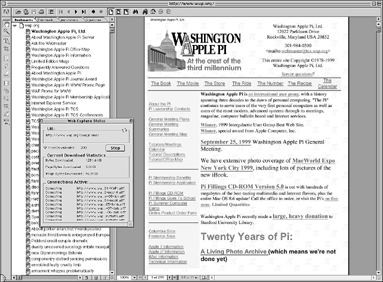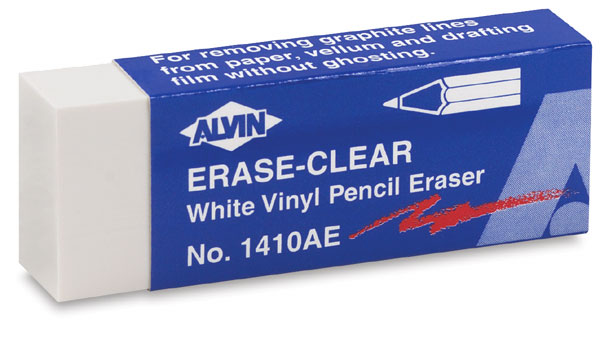
To be able to capture Web pages (and even entire Web sites) as PDF files for viewing in Acrobat or Adobe Reader, all you need is Internet access, Acrobat 6, and the Web site’s URL (Uniform Resource Locator). Before you can use Acrobat to capture Web pages, you must have your computer correctly configured for accessing the Internet. If you already get online with a popular Web browser, such as Microsoft Internet Explorer or Netscape Navigator, Acrobat should be able to detect these settings and use them for Web capture. If you find that you can’t capture Web pages as described in this section, open the Internet Properties dialog box from within Acrobat by choosing Edit➪Preferences➪Internet Settings, and then seek help from your ISP (Internet service provider) or IP personnel in getting your Internet settings correctly configured in Acrobat.
The steps for capturing the pages are easy as can be:
- In Acrobat, choose File➪Create PDF➪From Web Page, or click the Create PDF button on the Tasks toolbar and choose From Web Page on the pop-up menu. The Create PDF from Web Page dialog box appears.
- In the URL text box, type or paste in the URL address of the site whose Web pages are to be downloaded. If you’re converting a local HTML document to PDF (that is, one that’s saved on your hard drive or local area network rather than on the Internet), click the Browse button. Then open the folder, select the document’s file icon in the Select File to Open dialog box, and then click the Select button. 3. In the Settings area of the Open Web Page dialog box, select the Get Entire Site radio button to capture all the Web pages on the site.
- To capture only the Web site’s start page, leave the Get Only radio button selected with 1 in the level(s) spinner button text box to the immediate right.
- To capture all the pages linked to the start page, increase the value in the level(s) text box to 2; to get all the pages linked to the pages linked to the start page, increase the level(s) value to 3, and so on.
- To restrict the Web page capture to only pages found on the same Web site or on the same Web server, select the Stay on Same Path and the Stay on Same Server check boxes as well.
- Click the Create button to begin capturing the designated Web pages as PDF files.If you select the Get Entire Site radio button, the Potentially Large Download Confirmation alert dialog box automatically appears, warning you that you may have bitten off more than your computer can chew. If you’re sure that you have the patience (or a lightning-fast download connection), have sufficient hard drive space, and are not attempting to download the Library of Congress Web site, click the Yes button to proceed with the potentially large download of the entire site. As soon as you click the Download button or the Yes button in the Potentially Large Download Confirmation alert dialog box, Acrobat begins downloading and converting the designated Web pages and displays the Download Status dialog box, which keeps you informed of the progress of the first part of the downloading process.
As the Web pages start arriving on your hard drive, the Download Status dialog box disappears as quickly as it appeared, and the first page of the Web site appears in Acrobat’s Document pane. The Navigation pane with the Bookmarks palette selected is also automatically displayed in the Acrobat window. The Bookmarks palette illustrates the hierarchical relationship of the pages you downloaded as it continues to display the names of the pages on each level as they are successfully downloaded.
If Acrobat is not able to download the complete contents of all the pages on the levels you designated for download, it displays a dialog box called There Were Errors that lists all the files that it could not find or otherwise successfully download. After reviewing this list of files, click the OK button in the There Were Errors dialog box to close it.
After all the Web pages you asked for on a particular Web site are delivered to your hard drive, you still need to save the pages as a single PDF file so that you can access them in Acrobat or Adobe Reader without being connected to the Internet. To do this, choose File➪Save and then give the new PDF file a name, select the folder in which you want to save it, and click the Save button.

 When you first hear that Acrobat 6 can capture Web pages as PDF files, you may wonder why on Earth anyone in her right mind would want to do such a thing. After all, Web browsers are not only perfectly capable of displaying any and all Web pages in their native HTML (HyperText Markup Language) format, but they are also much more widespread than Acrobat and Adobe Reader. And, of course, this is true — as long as you’re connected to the Internet. The moment you get disconnected from the Internet, all Web browser access to online content shuts off (unless your browser is capable of caching the pages on your hard drive and you know how to set this up). In this chapter, you discover how easy it is to capture Web pages as PDF files that you can browse at any time on any computer equipped with a copy of Acrobat or Adobe Reader. Because the Web pages are PDF files, not only can you browse them when you don’t have Internet access handy, but you can also annotate them and distribute them as you would any other PDF document. This makes internal Web site design reviews a real joy because it’s easy to send the PDF versions of the Web pages to clients and coworkers for approval, as well as elicit feedback from them right on the pages if they’re using Acrobat 6.
When you first hear that Acrobat 6 can capture Web pages as PDF files, you may wonder why on Earth anyone in her right mind would want to do such a thing. After all, Web browsers are not only perfectly capable of displaying any and all Web pages in their native HTML (HyperText Markup Language) format, but they are also much more widespread than Acrobat and Adobe Reader. And, of course, this is true — as long as you’re connected to the Internet. The moment you get disconnected from the Internet, all Web browser access to online content shuts off (unless your browser is capable of caching the pages on your hard drive and you know how to set this up). In this chapter, you discover how easy it is to capture Web pages as PDF files that you can browse at any time on any computer equipped with a copy of Acrobat or Adobe Reader. Because the Web pages are PDF files, not only can you browse them when you don’t have Internet access handy, but you can also annotate them and distribute them as you would any other PDF document. This makes internal Web site design reviews a real joy because it’s easy to send the PDF versions of the Web pages to clients and coworkers for approval, as well as elicit feedback from them right on the pages if they’re using Acrobat 6.





 The following PowerPoint-only options appear in the Settings tab on the Acrobat PDFMaker dialog box when you choose Adobe PDF➪Change Conversion Settings in Microsoft PowerPoint:
The following PowerPoint-only options appear in the Settings tab on the Acrobat PDFMaker dialog box when you choose Adobe PDF➪Change Conversion Settings in Microsoft PowerPoint:






